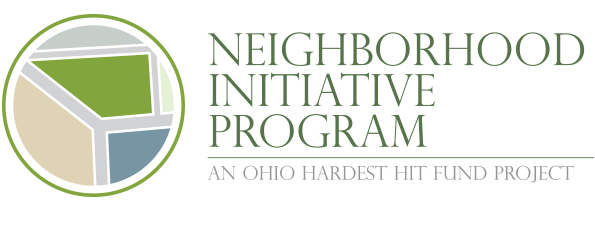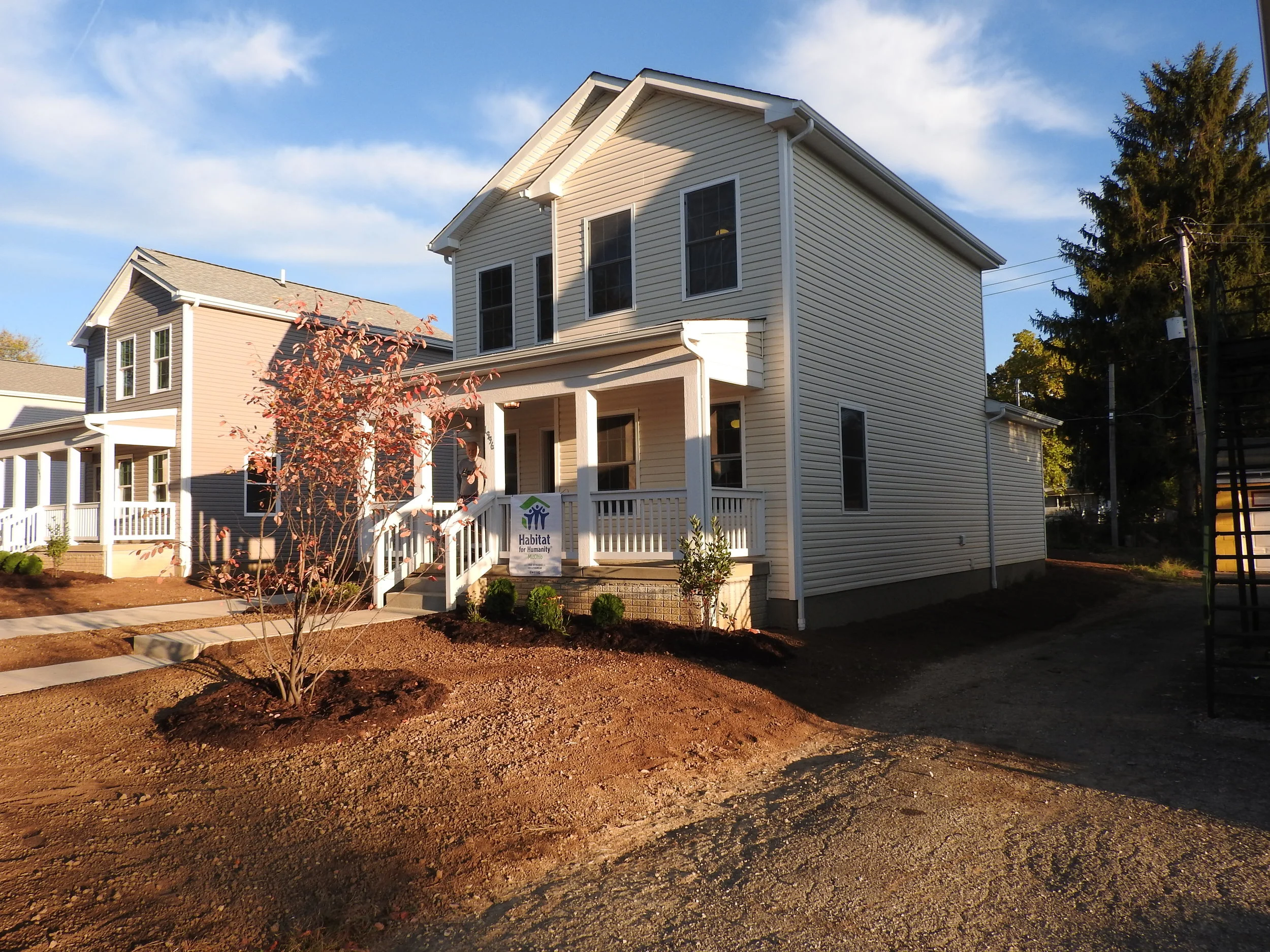According to a recently released report by Greater Ohio Policy Center, in the past five years, the Columbus Land Redevelopment Office and Central Ohio Community improvement Corporation (COCIC) have generated $180 million in economic impact in Columbus and Franklin County communities.
GOPC Releases Study on Ohio's County Land Banks
The Greater Ohio Policy Center’s latest report, “Taking Stock of Ohio County Land Banks: Current Practices and Promising Strategies,” places land banks in the larger context of community revitalization, and highlights promising county land bank programs that have the potential to greatly contribute to sustainable economic and community redevelopment throughout Ohio.
GOPC Testifies to New Jersey Legislature on Benefits of Land Banking
 On Monday, GOPC Executive Director Lavea Brachman gave testimony to the New Jersey legislature Housing and Community Development Committee on the status of land banks in Ohio to help inform their consideration of proposed land bank legislation for New Jersey.
On Monday, GOPC Executive Director Lavea Brachman gave testimony to the New Jersey legislature Housing and Community Development Committee on the status of land banks in Ohio to help inform their consideration of proposed land bank legislation for New Jersey.
At the invitation of the Housing and Community Development Network of New Jersey, Brachman gave the following remarks (excerpt from testimony):
“Similar to New Jersey, Ohio’s cities have been hit hard by urban blight and decline, experiencing some of the highest foreclosure and vacancy rates in the country. At its height in 2009, Ohio’s foreclosure filings was almost 90,000 per year, and the vacancy rates have climbed to devastating levels of over 15% in such cities as, Cleveland, Youngstown and Cincinnati, and over 20% in Dayton and many other cities and towns around the state. These vacancies have also cost municipalities exponential amounts in collateral damage, represented in the form of public safety hazards and decreased property values.
In 2008, in response to this unparalleled foreclosure and vacant and abandoned property crisis, the Ohio General Assembly, with bipartisan support, passed legislation creating Ohio’s first county land bank, piloted in Cuyahoga County (where Cleveland is located). In 2010, GOPC and a coalition of partners from around the state successfully advocated for passage of legislation that extended land bank authority to an additional 42 out of Ohio’s 88 counties (based on a population threshold), permitting these specified counties to create a hybrid organization that combines the private sector efficiency of a non-profit corporation with the public purposes, powers and funding of a governmental organization.
Ohio land banks are a welcome example of a state policy implemented with appropriate local control intervening effectively to jumpstart local market operations. While Ohio communities have a long way to go to return to economic and physical health—and while there is room for land banks to maximize further use of their tools to help individuals thrive and achieve community revitalization—many cities and counties are actively leveraging their land banks’ capabilities demonstrating that well-intentioned state policy interventions in combination with local capacity and oversight can work in tandem with market operations. They are working so well that a recent proposal floated by the county treasurers’ association to expand land banks to the rest of the counties in the state.”
GOPC applauds the New Jersey legislature for considering the merits of land banks, which have made significant strides in blight elimination and neighborhood revitalization throughout Ohio.
The Neighborhood Initiative Program

Overview of the Neighborhood Initiative Program
The Ohio Housing Finance Agency (OHFA) received approval from the U.S. Department of the Treasury to utilize up to $60 million of Ohio’s remaining Hardest Hit Funds (HHF) to assist with stabilizing local property values through the demolition of vacant and abandoned homes across Ohio.
The Neighborhood Initiative Program (NIP) is designed to stabilize property values by removing and greening vacant and abandoned properties in targeted areas in an effort to prevent future foreclosures for existing homeowners.
The Neighborhood Initiative Program (NIP) will fund strategically targeted residential demolition in designated areas within the state of Ohio. OHFA will partner with County Land Revitalization Corporations (“land banks”) or an entity that has signed a cooperative agreement with an established county land bank.
- NIP will be available to the 17 Ohio counties that have an established land bank.
- OHFA has issued a Request for Proposals from the state’s county land banks.
- The program begins in early 2014 and concludes in 2017.
Technical Assistance
OHFA has contracted GOPC to advise OHFA and applicants on the implementation of the Neighborhood Initiative Program (NIP).
Assistance includes:
- Consultation with applicants regarding best practices for the selection of neighborhoods and properties for the program
- Strategic and technical advice to eligible applicants in responding to the RFP for the NIP
Best Practices for Strategic Demolition
The guidelines for the Neighborhood Initiative Program (NIP) are available on OHFA's website.
This webpage provides information and resources to assist applicants as they prepare their applications for NIP funding and implement their programs according to the NIP guidelines.
Program applicants must focus on:
- Target areas
- Demolition and greening of abandoned residential properties
- Preventing further reduction in property values
- Preventing possible foreclosure of existing residential homes
Below is GOPC's presentation on best practices for implementing the NIP program.
The following resources may be useful to NIP applicants and grantees:
- “Green Investment Strategies: How They Matter for Urban Neighborhoods” by Wachter, Gillen and Brown of the Wharton School of Business at University of Pennsylvania, 2007
- Land Bank Playbook by Western Reserve Land Conservancy’s Thriving Communities Institute
- “Laying the Groundwork for Change: Demolition, urban strategy, and policy reform” by Alan Mallach, Brookings Metropolitan Policy Program, Sept 2012
- NSP Land Banking Toolkit from OneCPD Resource Exchange
- “Policy Recommendations: Greening Vacant Lots for Pittsburgh’s Sustainable Neighborhood Revitalization” produced by Carnegie Mellon University Heinz School of Public Policy and Management, Fall 2006
- "Re-imagining Cleveland: Ideas to Action Resource Book" by Kent State University's Cleveland Urban Design Collaborative and Cleveland Neighborhood Progress, January 2011
- “Vacant Property: Strategies for Redevelopment in the Contemporary City” by Luke Wilkinson, Georgia Institute of Technology, MCRP 2011
- “Vacant to Vibrant: A guide for revitalizing vacant lots in your neighborhood” produced by Carnegie Mellon University Heinz School of Public Policy and Management, Fall 2006


